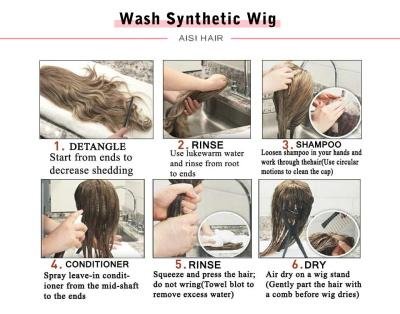How long does sealer take to dry? The answer isn’t always straightforward. Drying times can vary depending on the type of sealer used and environmental factors. Understanding the drying process is crucial for successful project completion. In this comprehensive guide, we will delve into the intricacies of sealer drying times, offering valuable insights and tips for achieving optimal results. Whether you are a seasoned professional or a DIY enthusiast, mastering the art of sealer drying times will elevate your projects to new heights. Let’s embark on this enlightening journey together.
How Long Does Sealer Take to Dry: A Comprehensive Guide
Introduction
Have you ever wondered about the process of sealing surfaces and how long it takes for the sealer to dry completely? Understanding the drying time of sealer is crucial to ensure a successful and long-lasting sealing job. In this article, we will delve into the factors that influence how long sealer takes to dry, different types of sealers, and tips to expedite the drying process.
Factors Affecting Sealer Drying Time
Type of Sealer
The type of sealer you use plays a significant role in determining how long it will take to dry. There are various types of sealers available in the market, including water-based sealers, solvent-based sealers, and penetrating sealers. Water-based sealers generally dry faster compared to solvent-based ones, as they rely on water as a carrier instead of chemicals.
Surface Material
The material of the surface being sealed can impact the drying time of the sealer. Porous surfaces such as concrete or brick may absorb the sealer more quickly, resulting in a faster drying time. On the other hand, non-porous surfaces like metal or glass may take longer for the sealer to dry as it sits on the surface without being absorbed.
Environmental Conditions
Environmental factors such as temperature, humidity, and air circulation can influence how long sealer takes to dry. In warm and dry conditions, the sealer may dry more quickly, while in cold and humid conditions, the drying process may be prolonged. Adequate ventilation can also help accelerate the drying time of the sealer.
Types of Sealers and Their Drying Times
Water-Based Sealers
Water-based sealers are popular for their fast drying times. Typically, water-based sealers dry to the touch within 1-2 hours and can be recoated after 4-6 hours. However, full curing may take up to 24-48 hours depending on environmental conditions.
Solvent-Based Sealers
Solvent-based sealers contain volatile organic compounds (VOCs) that help them penetrate the surface deeply. These sealers usually take longer to dry compared to water-based sealers, with drying times ranging from 4-8 hours to 24 hours or more for full curing.
Penetrating Sealers
Penetrating sealers are designed to penetrate into the pores of the surface, providing long-lasting protection. The drying time for penetrating sealers can vary widely depending on the surface material and porosity, ranging from a few hours to several days for complete drying.
Tips to Speed Up Sealer Drying Time
Optimal Conditions
Choose a day with moderate temperature (around 70-80°F) and low humidity for sealing to ensure faster drying times. Avoid sealing on extremely hot or cold days, as it can affect the sealer’s ability to dry properly.
Proper Preparation
Ensure the surface is clean, dry, and free of any debris before applying the sealer. This will help the sealer adhere better and dry more efficiently.
Thin Layers
Apply the sealer in thin, even coats to promote quicker drying. Thick layers of sealer take longer to dry and may result in uneven or blotchy finishes.
Use Fans or Dehumidifiers
Using fans or dehumidifiers in the sealed area can help improve air circulation and reduce humidity, speeding up the drying process. Make sure to follow safety precautions when using electrical devices near wet surfaces.
Understanding how long sealer takes to dry is essential for achieving a successful sealing project. By considering factors such as the type of sealer, surface material, and environmental conditions, you can better estimate the drying time and plan your sealing project accordingly. Remember to follow manufacturer instructions and best practices to ensure optimal results. With the right knowledge and preparation, you can achieve a beautifully sealed surface that lasts for years to come.
How Long Does Seam Sealer Take To Dry? – Car Collector Enthusiasts
Frequently Asked Questions
How long does sealer typically take to dry?
Sealer drying times can vary based on factors such as the type of sealer used, environmental conditions, and application thickness. However, in general, most sealers dry to the touch within 2-4 hours.
What can affect the drying time of sealer?
The drying time of sealer can be influenced by factors like temperature, humidity levels, air circulation, and the porosity of the surface being sealed. Warmer, drier conditions usually lead to faster drying times.
Is it necessary to wait before applying a second coat of sealer?
It is essential to follow the manufacturer’s guidelines regarding reapplication times. Typically, waiting for the first coat to fully dry before applying a second coat ensures proper bonding and effectiveness of the sealer.
How can I tell if the sealer is completely dry?
To check if the sealer is dry, lightly touch a small inconspicuous area to see if it is no longer tacky or leaves any residue on your finger. Additionally, following the recommended drying time specified by the sealer manufacturer is advisable.
Final Thoughts
In conclusion, the drying time of sealer can vary based on the type of sealer used. Typically, water-based sealers dry faster than solvent-based ones. Factors such as humidity and temperature also influence drying times. It is important to follow the manufacturer’s instructions for the specific sealer being used. To answer the question of how long does sealer take to dry, always consider the product’s characteristics and environmental conditions for an accurate estimate.






+ There are no comments
Add yours